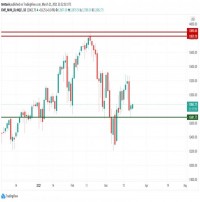|
Why Do Trends Exist? People sometimes object to trend-following strategies on the ground that there is no necessity for markets to exhibit trends. Why should there be trends in market prices? AQR Capital, a quantitative hedge and mutual fund manager, has issued a couple of papers that in part address this question. Below is a summary of some of the key points, written by Chidem Kurdas. The two AQR studies we draw on are "Understanding Managed Futures(winter 2010) by Brian Hurst, Yao Hua Ooi and Lasse Pedersen, and "The Case for Momentum Investing," (summer 2009) by Adam Berger, Ronen Israel and Tobias Moskowitz. See Manager Profile for the new AQR managed futures fund.Many systematic traders look for market momentum— the tendency of markets to persist in one direction for some time. Assets that have performed relatively well continue to perform relatively well, while those that have performed relatively poorly continue to perform relatively poorly. Models pick up momentum in various time frames and signal trade opportunities. A large body of academic research provides evidence for momentum, which does not appear to be a random or transient pattern. The investment style can generate strong returns across asset classes and over decades (Table 1). There are a number of explanations for this phenomenon based on studies of human behavior, drawing on the Nobel-Prize winning work of A. Tversky and D. Kahneman and other research. If prices initially under-react to good or bad news and move slowly to fully reflect the changes in fundamental value, trends will tend to develop. Behavioral biases may explain why there is under-reaction. On the other hand, if investors chase a trend, prices will over-react, further extending the trend. Of course, sooner or later all trends end. Dealing with transitions and trend reversals is a pivotal component of any investment program that seeks to take advantage of momentum. Models and managers have varying degrees of success in this tricky matter, which explains why investment programs that trade on the same market trends can make different returns. According to efficient markets theory, past price behavior provides no information about future prices. If markets are efficient, then returns to momentum must be due to differences in risk. But no such risk factor has been established. Instead, momentum is associated with some inefficiency in markets, possibly due to quirks in behavior that investors share with the rest of humanity. --------------------------------------------------------------------------------------------- TABLE 1
Source: C. Asness, T. J. Moskowitz and L. H. Pedersen, "Value and Momentum Everywhere," National Bureau of Economic Research Working Papers (2009). Also AQR Case for Momentum paper, cited above. ---------------------------------------------------------------- Trend Life Cycle The behavioral rationale for why trends persist can be understood in terms of the life cycle of a trend. Different biases explain the start and continuation of trends. At the start, under-reaction to a catalyst event like a supply shock slows price discovery. A possible reason is that people anchor their views to historical data and adjust their views insufficiently to new information. Another factor, called the disposition effect, is that people tend to sell winners too early and ride losers too long. They sell winners too early because they like to realize their gains. This selling puts downward pressure on price, which slows down upward adjustment to the new fundamental level. But people also hang on to losers for too long since realizing losses is painful. Instead, they try to make back the loss. The absence of sellers keeps prices from adjusting downward as fast as they should. A third reason is that non-profit-seeking market participants fight trends. Central banks try to reduce exchange-rate volatility and inflation expectations, potentially slowing down adjustments in currency and fixed-income markets. Hedgers in commodity markets can slow down price discovery. Because of these effects, the price initially moves too little in response to events, which creates a continued price drift as the market realizes the full implications of the event over time. An investment strategy that trades on the initial news can profit if the trend continues. Over-Reaction Once a trend starts, a number of other behavioral patterns come to play. These are listed in table 2. Possibly the most widespread and best-known is herding. When prices have moved up or down for a while, some traders may jump on the bandwagon. This herding effect can feed on itself, further propelling the trend. Many groups show signs of herding. It has been documented in institutions’ investment decisions and equity analysts’ recommendations and earnings forecasts. Investors tend to move from funds with recent poor performance and herd into funds that have recently done well. Confirmation bias may also be important. People tend to look for information that confirms what they already believe and regard recent price moves as representative of the future. This can lead investors to move capital into investments that have recently made money and out of investments that have declined, causing trends to continue. Risk management techniques that result in selling in down markets and buying in up markets, in line with the trend, have a similar effect. Stop-losses can cause buying or selling in the direction of the prevailing movement. Table 2 lists various behavioral explanations. TABLE 2Behavioral Reasons for Trends
|
|
This article was published in Opalesque Futures Intelligence.
|





 RSS
RSS











